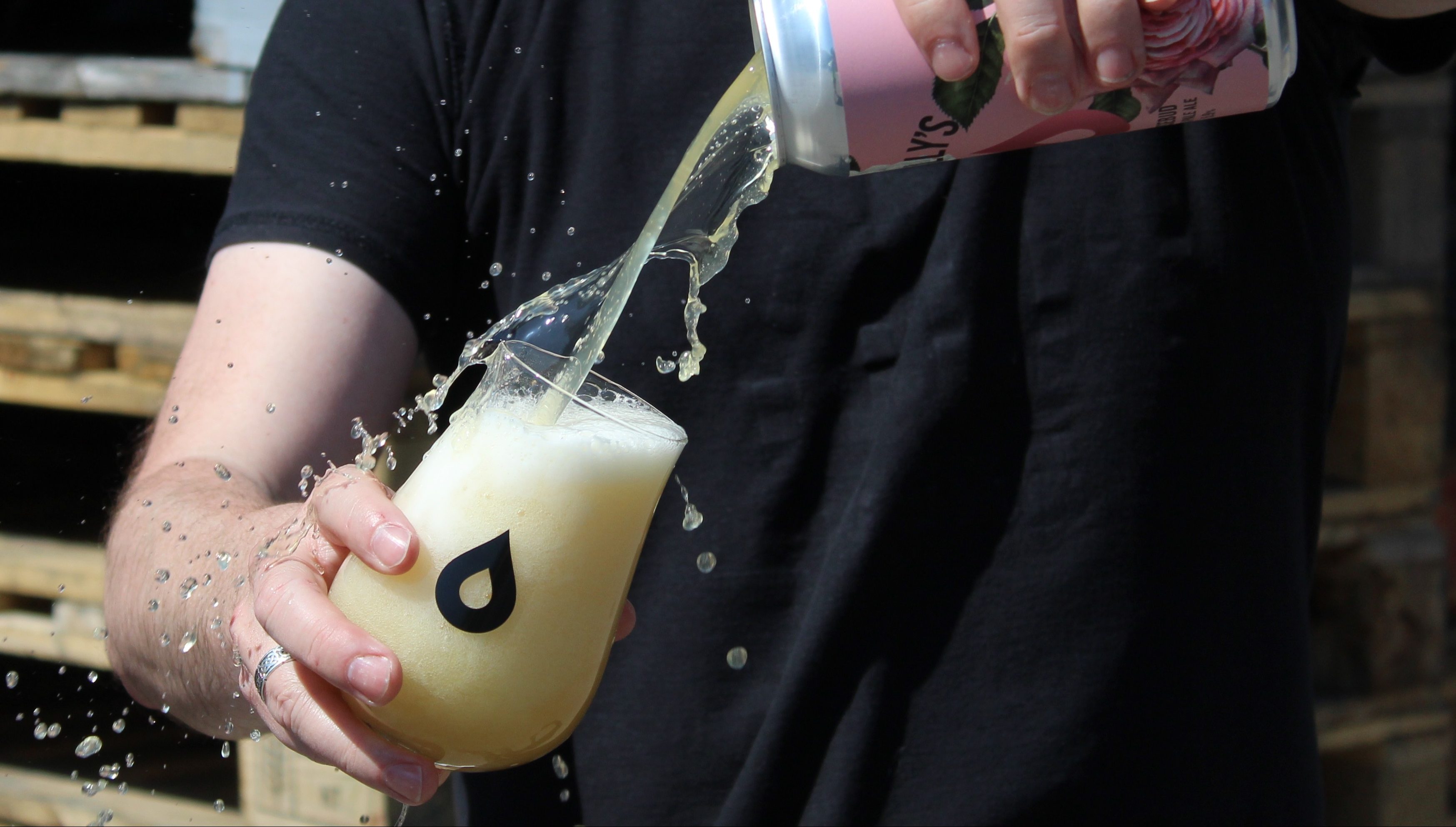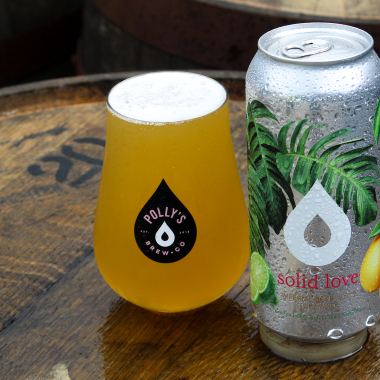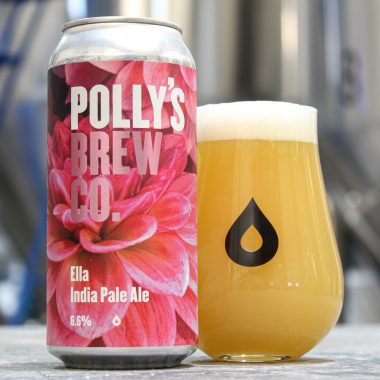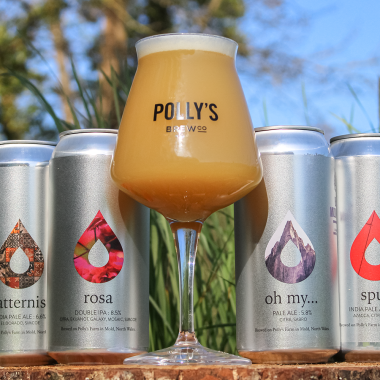IPA vs Pale Ale – What’s the difference?
What’s the difference between IPA and Pale Ale? Well, to cover the short version, IPAs have a higher hops and alcohol content than pale ales. And the longer version is that there’s plenty more to it than that! The story of IPA and pale ale is a rich one, so sit back and grab a pint, and we’ll delve into the wonderful world of craft beer and the subtle differences that make IPA and pale ale the popular styles they are today.
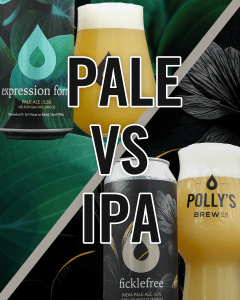
The History of IPA and Pale Ale
Pale Ale
To trace the history of India Pale Ale, we must first understand the evolution of Pale Ale.
Pale Ale can be traced back to mid-18th century Britain (though this is still disputed today) when advancements in kilning technology enabled a cleaner, lighter malt production. Barley was dried using coke-fired malt (a byproduct of coal) which produced less smoking and roasting of barley in the malting process. The result was a malt that was paler than its predecessors, christening the term “Pale Ale.”
IPA
It’s believed that IPA began with a significant historical event. Legend has it that this beloved brew was born out of necessity during the days of the British Empire’s expansion into India.
As British soldiers and expats found themselves longing for a taste of home, they encountered a major obstacle: the lengthy sea voyage from Britain to India made it difficult to keep their beloved Pale Ale fresh.
Brewers from England added more hops which meant the beer better survived the trip. Thanks to those innovative souls, IPA was born, and it was a big success with British sailors and expats in India.
The differences between Pale Ale and IPA
Alcohol Content & Bitterness
When it comes to Pale Ale and IPA, the devil is truly in the details – and those details lie in bolder hops and slightly higher ABV (alcohol by volume).
Pale Ales typically fall within the 4.5-5.8% ABV range, while IPAs tend to clock in at 5-7.5% ABV (or even higher for those bold Double IPAs, which can pack a punch at 7.5-9.5% ABV). But it’s not just about the numbers – the different hop volumes and ingredient quantities used in these two styles contribute to their unique flavour profiles and aromas.
While both are hoppy and bitter, IPAs take it up a notch with more hops and higher alcohol content. The result is a punchier, more robust beer that can sometimes push the boundaries of flavour.
Apart from the higher alcohol content, IPAs are also set apart by their elevated International Bitterness Units (IBUs). Though both beer styles are bitter, IPAs tend to be more bitter than Pale Ales due to the higher hop content.
Malt Profile
In the brewery, we generally use the same malt profile for both IPA and pale ales; extra pale, wheat, oats and dextrin. But one aspect that distinguishes IPAs from Pale Ales is the malt volume, which contributes to distinct flavour characteristics. While both types of beer are made using pale malts, IPAs generally have a more hop-forward character compared to Pale Ale.
IPAs are crafted with additional hops during brewing to ensure bitterness and, more often than not, even more hops in post-fermentation for added aroma. This combination results in IPAs having robust and vibrant hop flavours, often with notes of pine, citrus, and tropical fruits, much like our Rosebud IPA, which is rich in the freshest Citra, Galaxy, Mosaic, and Simcoe hops to create a certified tropical punchbowl of flavour.
IPAs and pale ales do share some characteristics, for example, both brews let the hop flavour do the talking. So what’s the difference? Well, in principle, pale ale should have a nice hop character but with a medium build thanks to malt volume, whereas IPAs tend to have higher ABV and IBU. Of course, there are always exceptions to the rule, and brewers continue to experiment with new and innovative ways to bring out the best in both styles.
Variations Within IPA and Pale Ale
It’s important to note that, within the IPA and Pale Ale styles, there are numerous subcategories with their own unique flavour profiles. For example, within the IPA category, you will find English IPA, American IPA, and Double/Imperial IPA, each with a unique blend of hops and malt, resulting in a range of flavours that can vary from crisp and refreshing to bold and intense. The same applies to Pale Ale, which includes well-known subcategories such as American Pale Ale and English Pale Ale. Each of these subcategories offers a unique twist on the classic Pale Ale style, with varying levels of malt and hop balance and different flavour profiles.
In general, though, these are the main differences between pale ales and IPAs:
| Comparisons | IPA | Pale Ale |
| Definition | A beer style known for its hop-forward character, typically featuring prominent hop flavours, aromas, and bitterness. IPAs can vary in strength and hop intensity, ranging from traditional IPAs with balanced profiles to more assertive and aromatic versions. | Pale Ale is a beer style known for its moderate to high hop bitterness and balanced malt character. Typically golden to amber colour, with a medium body and a smooth mouthfeel. |
| Malt | IPAs can have the same malt profile as pale ales but in smaller volumes, accentuating hop bitterness. | Pale ales typically have a moderate malt character and tend to use higher malt volumes. |
| ABV% | 5 – 7.4% ABV | 4.5 – 5.7% ABV |
| Taste | Bold and hop-forward flavour profile with a prominent bitterness ranging from moderate to high. A lighter malt backbone lets the hops take centre stage, and flavours often encompass a spectrum of citrus, pine, resin, and floral notes. A vibrant and refreshing taste experience. | Typically has a balanced and approachable flavour profile with moderate hop bitterness. The medium malt backbone strikes a harmonious balance between malt and hops, resulting in a smooth and easy-drinking beer with a refreshing finish. |
Examples of IPAs and Pale Ales
In the world of beer, the options seem endless when it comes to pale ales and IPAs. From classic styles to new and innovative creations, there is something for every taste bud. And while there may not be an official count of all the variations out there, one thing is for sure: the possibilities are unlimited.
Here are some of the most common pale ale and IPA styles in the world right now:
American Pale Ale
American pale ale (APA) is a style of pale ale developed in the United States. American pale ales are generally around 5% abv, featuring American hop varieties such as Cascade, Centennial, and Amarillo. APAs tend to have a lighter, cleaner malt profile – which lets the hops do the talking.
English Pale Ale or “Bitters”
English pale ales tend to be a gold-to-bronze coloured beer at 4.5%–5.5% ABV with a noticeable, but not overpowering, hop bitterness (30–45 IBU).
American IPA
American IPA typically has an alcohol content of around 5% – 7.4% ABV and has a golden to reddish colour. American IPA comes in a wide range of flavours and aromas, from citrusy and floral to piney and resinous. Typical examples (but there are lots more) of American hops are Cascade, Simcoe, Amarillo and Columbus.
English IPA
English IPAs tend to be more on the balanced side with a distinct, often bready, malt character to compliment the hops.
Hazy IPA
Hazy IPA (also known as New England IPA or NEIPA) has a cloudy appearance and rich flavour. Its distinct haze comes from brewing techniques and a high hop addition, resulting in an opaque look reminiscent of fresh fruit juice. With a smooth and juicy mouthfeel, thanks to the addition of oats or wheat, Hazy IPA exhibits intense hop aromas and flavours. Expect tropical fruit notes like mango and pineapple, as well as citrusy hints of grapefruit and orange.
Double IPA
Double IPA, AKA DIPA, is a stronger (7.5% -9.5% ABV) and more intense version of the classic IPA style. Double IPAs showcase a generous amount of hops, resulting in an explosion of aromatic and bitter flavours (depending on which hops are used). Despite the hop-forward profile, they maintain balance with a solid malt backbone, offering a full-bodied and satisfying experience. One of our favourites is Rosa, featuring a five-hop mega line up of Simcoe, Galaxy, Mosaic, Citra and Ekuanot. Sticky, juicy, piney and dank, it’s a fine choice for an evening beer.
Black IPA
Black IPA features a typical IPA recipe, but it uses some darker malts toward the end of the mashing process. These malts not only bring the signature darker colour to the beer, but also more roasted notes.
Double Dry Hopped India Pale Ale
Double Dry Hopped (DDH) IPA undergoes an intensified dry-hopping process, which involves adding hops to the beer during fermentation. This imparts aromatic flavours and aromas without contributing significant bitterness. The dry-hopping step is repeated or doubled, intensifying the hop experience even further. Our Step Inside The Panic Room DDH IPA is a great example of this beer style and features notes of juicy orange and blueberry.
Want to know more about different IPA styles? We’ve got you covered, check out ‘What is IPA? A beginners guide’ to learn everything you’ll ever need to know about one of the nation’s favourite beers.
Pale ale vs IPA: which is better?
When it comes to deciding between IPAs and pale ales, there’s no definitive winner. It truly comes down to what pleases your palate. If you’re looking for a beer that’s crisp, bitter, and perfect for a hot day, then pale ale might be your go-to. But if you’re after a more robust and fruity concoction, an IPA could be just what you’re looking for. And even if you have a clear preference, there’s a good chance you’ll end up enjoying both of these beer genres.
So, there you have it, folks. While IPAs and Pale Ales share a common heritage, they are distinct in their taste, aroma, and even appearance. Ultimately, it’s all about personal preference, and we encourage you to try both and compare them. Who knows, you might just find your next go-to brew. Cheers!

